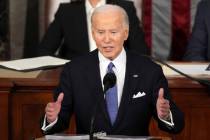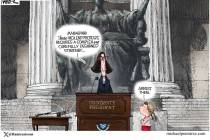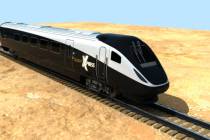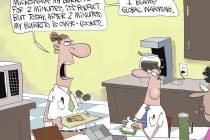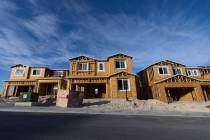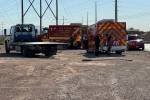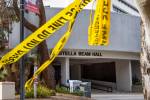EDITORIAL: Ambulance chaser
Trying to increase city revenues at the expense of public safety isn’t a good trade-off for taxpayers. But that’s exactly what’s happening as a result of the Las Vegas Fire Department’s heavy-handed suppression of patient transports by private-sector ambulance company American Medical Response.
In March, Las Vegas Fire Chief Willie McDonald unilaterally decided that his department’s paramedics would take an increasing number of transports from AMR. Before the change, AMR was handling about 70 percent of transports within city limits, and the Fire Department’s ambulances were taking 30 percent of them. Then a consultant’s report suggested the city, which still spends from reserves to balance its operating budget, could realize $12 million to $14 million per year in new revenue if the Fire Department took on more patient transports and collected reimbursements from insurance companies, Medicare and Medicaid.
Mr. McDonald is pushing toward a 50-50 transport split with AMR. He has said his department could potentially handle 75 percent of patient transports by late next year. And in pursuing these goals, he has blown up the city’s dual-response system for medical emergencies.
Under that model, both a Fire Department ambulance and an AMR ambulance were dispatched to a medical emergency call. Sometimes the Fire Department would arrive first, sometimes AMR would arrive first. Dual response, while redundant, assured the fastest possible response to every call. Because AMR pays an annual franchise fee of nearly $400,000 for the privilege of doing business in the city, AMR handled the bulk of transports, allowing Fire Department paramedics to return to their stations or proceed to additional calls.
But when Mr. McDonald moved the goalposts on March 3, AMR stopped receiving automatic notifications of emergency medical calls. As reported last week by the Review-Journal’s Jane Ann Morrison, AMR General Manager Scott White says Mr. McDonald’s new rules amount to “we’ll call you when we need you” — and that by the time AMR paramedics get the call, sometimes they’re already late.
Mr. White notes that in the month before the policy change, 29 calls resulted in a delay of 5 minutes or longer for AMR. Since the Fire Department began handling more transports, there have been 199 delayed calls, 13 of them with delays of between 20 and 30 minutes.
“Look at it from a patient’s perspective, if the patient has chest pains, shortness of breath or heart attacks,” Mr. White said.
He pointed to an April 17 stabbing at a McDonald’s restaurant near Sahara Avenue and Rancho Drive. An AMR ambulance was very close by, at one of the company’s regular positioning locations, but wasn’t called. If it had been dispatched immediately, as it would have under the old system, the victim might have gotten to UMC minutes sooner. The patient was declared dead at University Medical Center with stab wounds to the throat.
“We were not sent on that call,” Mr. White said. “Everyone should have responded.”
Mr. White says the new system is broken. “The patient doesn’t know there’s a delay, and even the firefighters don’t know there’s a delay.”
Mr. McDonald doesn’t see a problem, as long as his department is being paid for trips to valley hospitals. But such shortcomings were totally predictable. The city doesn’t have as many ambulances as AMR.
The idea that AMR can remain in business in the city exclusively as a safety valve, while firefighters cherry-pick the calls most likely to yield an insured patient, is folly. Already, AMR is scheduling more shifts in the evening and overnight hours, when city firefighters, who work 24-hour shifts, are trying to sleep because they’ve met their transport quotas. AMR paramedics work 12-hour shifts and aren’t paid to sleep.
But the public’s concerns here go beyond response times. The city government is trying to muscle out a taxpaying, franchise-fee-paying business and taxpaying jobs. Does anyone believe the Fire Department won’t eventually request more ambulances and more firefighter positions? City firefighters are paid between two and four times what AMR paramedics earn because they’re overtrained for the job of treating and transporting patients. If this arrangement isn’t changed, AMR will be forced out completely, and the Fire Department will be burdened with transporting every indigent patient, every Medicaid patient, every uninsured patient who’ll skip on the bill. The Fire Department couldn’t possibly recover all its costs because its payroll and equipment budgets are too high. Ultimately, it’s very likely that taxpayers will be forced to subsidize a service currently handled by a business.
City Councilman Stavros Anthony told Ms. Morrison he expects Chief McDonald will present a report to the council in about a month. But council members can’t wait that long to receive an update on what’s happening. They should address this debacle at this week’s meeting. At a minimum, the council should have on hand a check for AMR to reimburse its franchise fee. On April 22, the company paid the city $97,698.86 for the right to be hosed by the Fire Department.
If the city is going to change the dual-response system, get the Fire Department out of the medical transport business instead.









